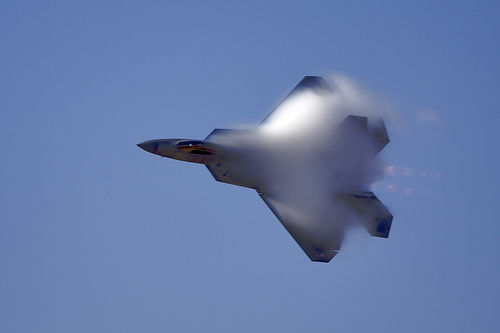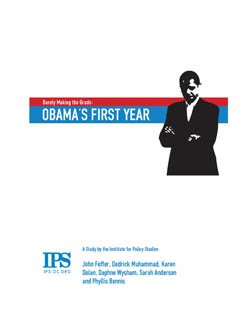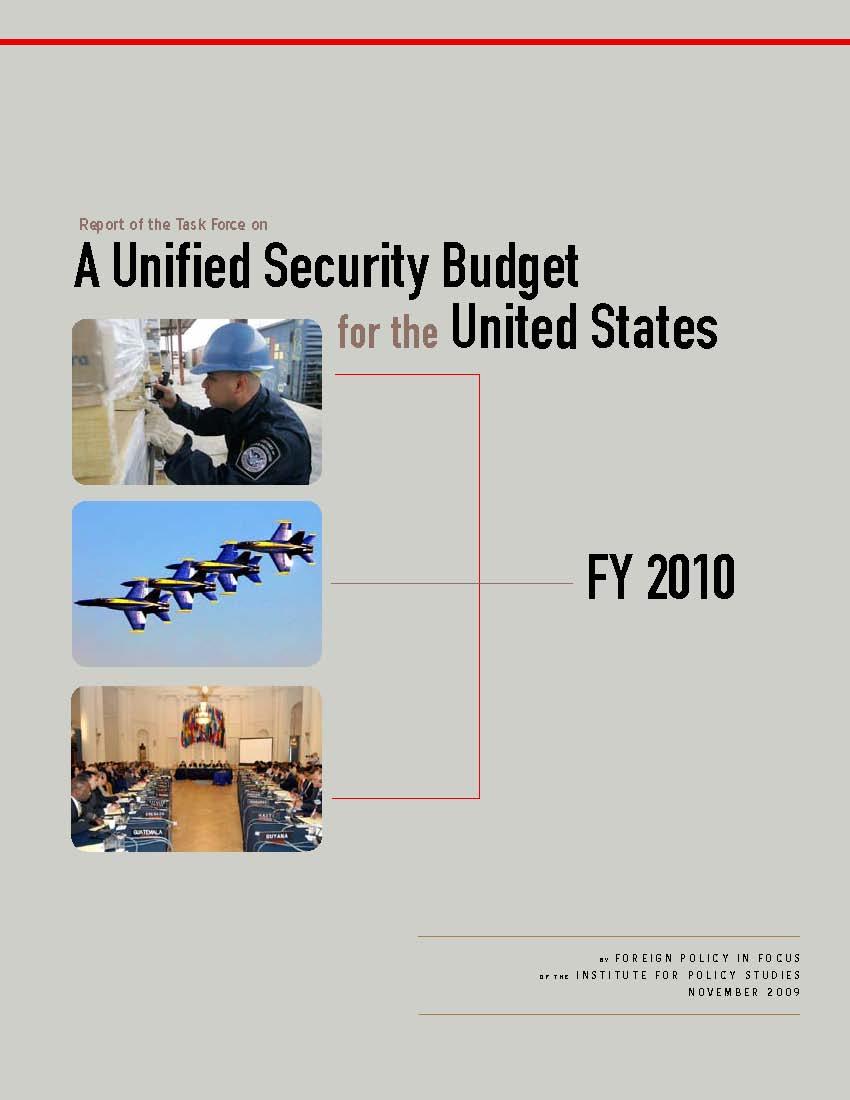Quiz: Who said this? “Is it a dire threat that by 2020 the United States will have only 20 times more advanced stealth fighters than China.”

A Unified Security Budget for the United States, FY 2011
Somewhere on the list of 2010 milestones should be this: It was the year that unified security budgeting won the endorsement of the U.S. executive branch’s top leadership. Secretary of State Hillary Clinton first made this endorsement in May, during the Q&A following her speech supporting the new National Security Strategy. Joining her in the endorsement, she said, were Defense Secretary Robert Gates and Joint Chiefs of Staff Chair Adm. Mike Mullen, who both “wrote really strong letters to the House and Senate leadership and the appropriators and the budgeteers to make the case that we have to start looking at a national security budget.”
The Trillion-Dollar Question
The full-page ads in The Washington Post seem so reasonable. The military contractor Pratt & Whitney has been arguing that America doesn’t need to spend $485 million to develop a second engine for the F-35 jet fighter. It’s a compelling argument. We’re in a serious economic crisis, so why on earth would we build another jet engine when the first one is sufficient?
Swords Into Solar Panels
Is there another way to create jobs in Owego? I submit that there is.

The Pentagon’s Runaway Budget
With his decision to boost defense spending, President Obama is continuing the process of re-inflating the Pentagon that began in late 1998 — fully three years before the 9/11 attacks on America. The FY 2011 budget marks a milestone, however: The inflation-adjusted rise in spending since 1998 will probably exceed 100 percent in real terms by the end of the fiscal year. Taking the new budget into account, the Defense Department has been granted about $7.2 trillion since 1998, when the post-Cold War decline in defense spending ended.

Barely Making the Grade: Obama’s First Year
After the first 100 days of the Obama administration, the Institute for Policy Studies introduced our Change Index to evaluate the policies and performance of the new president. Did the candidate who promised change deliver on his promises?
Obama and the Permanent War Budget
It’s been a good decade for the Pentagon. The most recent numbers from Capitol Hill indicate that Pentagon spending (counting Iraq and Afghanistan) will reach over $630 billion in 2010. And that doesn’t even include the billions set aside for building new military facilities and sustaining the U.S. nuclear arsenal.
Bush-Style Military Spending Not Over Yet
Thought the Bush years were over? Not so fast.

A Unified Security Budget for the United States, FY 2010
The Obama administration promised “a sweeping shift of priorities and resources in the national security arena.” The sixth yearly Report of the Task Force on a Unified Security Budget for the United States, FY 2010 finds that the promise of resource shifting has not yet been kept. The needle tracking the overall balance of spending on offense (military forces), defense (homeland security) and prevention (non-military foreign engagement) stayed stubbornly in place. In the FY 2010 request, like the one before it, 87% of the nation’s security resources were allocated to the tools of military force. This is true even excluding the appropriations for wars the country is currently fighting.
